I’m appointed jointly in the History Department and the College of Letters so I offer courses in both. These include required courses like any of the COL colloquia (which cover European literature, history, and philosophy in different periods from antiquity to the present) or the seminar for history majors, Issues in Contemporary Historiography, and the introductory survey on Early Modern Europe. I often give small discussion based seminars just for first year students and I also teach sophomore seminars (to introduce historical research methods) and advanced seminars (to probe historians’ current questions in depth) for the History Department. However, many of my courses cut across disciplines, bringing in literature, art, political philosophy, architecture, and music. They tend to have a strong emphasis on Italy or Rome, but sometimes they range throughout Europe and even to its colonies. Occasionally I also offer courses in Wesleyan’s Graduate Liberal Studies Program.
Baroque Rome
https://iasext.wesleyan.edu/regprod/!wesmaps_page.html?crse=010993&term=1089
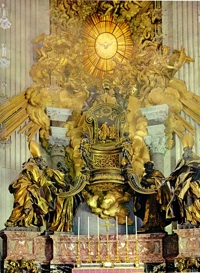 This seminar for first year students focuses on Europe’s most famous cultural capital between 1580 and 1650, a period when Rome was a symbol of religious zeal, artistic creativity, and ideological repression. We explore these contradictions and their impact on intellectual and artistic innovation, by taking a close look at the texture of life in early modern Rome and at the works of some of the city’s most celebrated saints, murderers, artists, musicians, and scientists, including San Filippo Neri, Beatrice Cenci, Caravaggio, Artemisia Gentileschi, Gian Lorenzo Bernini, and Galileo. Course materials emphasize writings by historians, art and music historians, and historians of science, as well as visual, literary, musical, and documentary sources from the period. The seminar culminates with a research project on some individual or aspect of Baroque Rome.
This seminar for first year students focuses on Europe’s most famous cultural capital between 1580 and 1650, a period when Rome was a symbol of religious zeal, artistic creativity, and ideological repression. We explore these contradictions and their impact on intellectual and artistic innovation, by taking a close look at the texture of life in early modern Rome and at the works of some of the city’s most celebrated saints, murderers, artists, musicians, and scientists, including San Filippo Neri, Beatrice Cenci, Caravaggio, Artemisia Gentileschi, Gian Lorenzo Bernini, and Galileo. Course materials emphasize writings by historians, art and music historians, and historians of science, as well as visual, literary, musical, and documentary sources from the period. The seminar culminates with a research project on some individual or aspect of Baroque Rome.
Gender and History
https://iasext.wesleyan.edu/regprod/!wesmaps_page.html?crse=010657&term=1139
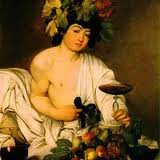 In this seminar for sophomores interested in majoring in History or in the Feminist, Gender and Sexuality Studies program, I introduce the key theoretical concepts we use to talk about sexuality, sex difference and gender, and ground them in history. We examine where notions of sex difference came from and their 2000 years of authority in the classical, Judeo-Christian, and Islamic traditions. Students then read primary sources that reveal how actual men and women thought and behaved in early modern Europe (1500-1750) and research a historical topic of their own choice on gender, sex, or sexuality in the pre-modern past.
In this seminar for sophomores interested in majoring in History or in the Feminist, Gender and Sexuality Studies program, I introduce the key theoretical concepts we use to talk about sexuality, sex difference and gender, and ground them in history. We examine where notions of sex difference came from and their 2000 years of authority in the classical, Judeo-Christian, and Islamic traditions. Students then read primary sources that reveal how actual men and women thought and behaved in early modern Europe (1500-1750) and research a historical topic of their own choice on gender, sex, or sexuality in the pre-modern past.
The Italian Renaissance
http://www.wesleyan.edu/wesmaps/course0405/col106s.htm
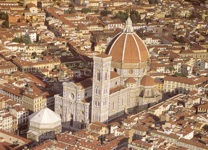 Between 1350 and 1550 thinkers and artists in the cities and courts of Italy tried to recover a lost world, the world of the ancients. Driven by their passion for the classical past, they ended up by creating a new world, which we know as the Italian Renaissance. This first-year seminar focuses on the reading and writing of the men who made this brilliant moment, emphasizing the two major centers of Florence and Rome. As an introduction to the interdisciplinary College of Letters the course offers discussion and close reading of original texts in translation and looks at literary, historical, philosophical (and some artistic) works in their historical context.
Between 1350 and 1550 thinkers and artists in the cities and courts of Italy tried to recover a lost world, the world of the ancients. Driven by their passion for the classical past, they ended up by creating a new world, which we know as the Italian Renaissance. This first-year seminar focuses on the reading and writing of the men who made this brilliant moment, emphasizing the two major centers of Florence and Rome. As an introduction to the interdisciplinary College of Letters the course offers discussion and close reading of original texts in translation and looks at literary, historical, philosophical (and some artistic) works in their historical context.
Early Modern Europe
https://iasext.wesleyan.edu/regprod/!wesmaps_page.html?crse=004802&term=1081
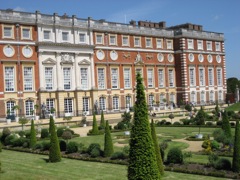
This introductory lecture course surveys the history of Europe during the formative period of the modern era from 1500 to 1800. It focuses on the crucial episodes of religious and political conflict in these centuries, while also highlighting key intellectual, cultural, and economic developments: the Protestant Reformation and Catholic Reformation, the rise of capitalism and plantation slavery, the scientific revolution, the English civil war, court culture, the Enlightenment, and the French Revolution. The course provides broad historical background essential for any student interested in study abroad or in the sources of modern ideological conflict.
Rome Through the Ages
https://iasext.wesleyan.edu/regprod/!wesmaps_page.html?crse=003239&term=1091
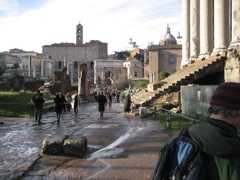 Here we look at Rome both as a city of real people and a city of the imagination. Focusing on monuments and texts, this interdisciplinary lecture and discussion course surveys the history of Rome from its founding (legendary 753 BCE) to the height of the Baroque period around 1650. It uses the story of this unique city to introduce a particularly resonant urban topography, to study celebrated literary works generated in Rome, and to explore the symbolic role the city has played in world culture over two millennia.
Here we look at Rome both as a city of real people and a city of the imagination. Focusing on monuments and texts, this interdisciplinary lecture and discussion course surveys the history of Rome from its founding (legendary 753 BCE) to the height of the Baroque period around 1650. It uses the story of this unique city to introduce a particularly resonant urban topography, to study celebrated literary works generated in Rome, and to explore the symbolic role the city has played in world culture over two millennia.
Early Modern Masculinities
https://iasext.wesleyan.edu/regprod/!wesmaps_page.html?crse=012093&term=1089
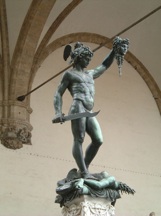 We explore theories and practices of masculinity in Europe between 1500-1800 in this advanced history research seminar. We begin with prevailing theories of sexuality, sexes, bodies, and genders. How did philosophers and theologians in the western tradition define maleness and what it meant to be a man? We then turn to practices. How were sex and gender identities negotiated in the actual lived experience of early modern people? What happened to the men who did not “fit” into the norms of patriarchy: priests, bachelors, youths, hermaphrodites, castrati? Student research projects take up a wide variety of topics related to society and the sexes in the early modern European world.
We explore theories and practices of masculinity in Europe between 1500-1800 in this advanced history research seminar. We begin with prevailing theories of sexuality, sexes, bodies, and genders. How did philosophers and theologians in the western tradition define maleness and what it meant to be a man? We then turn to practices. How were sex and gender identities negotiated in the actual lived experience of early modern people? What happened to the men who did not “fit” into the norms of patriarchy: priests, bachelors, youths, hermaphrodites, castrati? Student research projects take up a wide variety of topics related to society and the sexes in the early modern European world.
Women and Gender in Renaissance Italy
http://www.wesleyan.edu/wesmaps/course0405/hist154s.htm
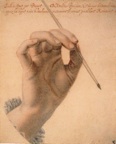 This history seminar for sophomores explores the images, roles, and modes of expression of women in the lively cultural and business world of the Italian cities and courts between 1300 and 1700. Notions of gender and ideas about the meaning of male and female were articulated in a variety of settings in Renaissance Italy. While investigating the power of such definitions, the course also sheds light on the richly textured social realities in which Renaissance women and men grew up, worked, and lived.
This history seminar for sophomores explores the images, roles, and modes of expression of women in the lively cultural and business world of the Italian cities and courts between 1300 and 1700. Notions of gender and ideas about the meaning of male and female were articulated in a variety of settings in Renaissance Italy. While investigating the power of such definitions, the course also sheds light on the richly textured social realities in which Renaissance women and men grew up, worked, and lived.
